
Know Your Chances
This book has been shown in two randomized trials to improve peoples' understanding of risk in the context of health care choices.
| 0 Comments | Evaluated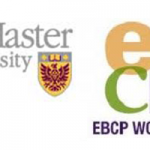
McMaster Evidence-Based Clinical Practice Workshop Resources – Therapy module
McMaster Evidence-Based Clinical Practice Workshop – Therapy module.
| 0 Comments
McMaster Evidence-Based Clinical Practice Workshop Resources – Systematic review module
McMaster Evidence-Based Clinical Practice Workshop – Systematic review module.
| 0 Comments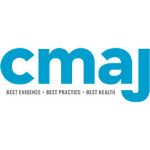
Tips for learners of evidence-based medicine: 1. relative risk reduction, absolute risk reductions and number needed to treat
Relative risk reduction, absolute risk reduction and number needed to treat.
| 0 Comments
Tips for teachers of evidence-based medicine: Relative risk reduction, absolute risk reduction and numbers needed to treat
Tips for teachers of evidence-based medicine: 1. Relative risk reduction, absolute risk reduction and number needed to treat.
| 0 Comments
The 2011 Oxford CEBM Levels of Evidence: Introductory Document
The 2011 Oxford Centre for Evidence-Based Medicine’s Levels of Evidence.
| 0 Comments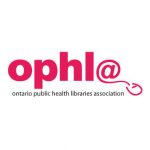
Critical Appraisal of Research Evidence 101
Ontario Public Health Libraries Association guide to critical appraisal of research evidence.
| 0 Comments
Policy: twenty tips for interpreting scientific claims
This list will help non-scientists to interrogate advisers and to grasp the limitations of evidence.
| 0 Comments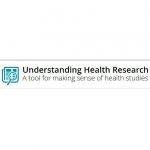
Understanding Health Research: A tool for making sense of health studies
An interactive online tool designed to help anybody to understand scientific health research evidence.
| 0 Comments
Ice bucket challenge “breakthrough”? Experts pour cold water on superficial reporting
Beware claims of treatment breakthrough. They’re probably not.
| 0 Comments
The Slippery Slope: Is a Surrogate Endpoint Evidence of Efficacy?
A discussion of the dangers of relying on surrogate outcome measures.
| 0 Comments
University of Western Australia: Bias Minimisation, randomisation and blinding
University of Western Australia’s explanation of why random allocation to comparison groups and blinding (if possible) are important.
| 0 Comments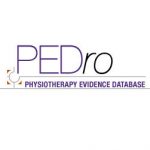
Is the therapy clinically useful?
An article from the PEDro database on whether a treatment is useful.
| 0 Comments
Evidence-Based medicine in Pharmacy Practice
An article by Suzanne Albrecht on Evidence-Based Medicine in Pharmacy Practice.
| 0 Comments
Goals and tools in Meta-analysis
Meta-analysis in Michigan State University’s Evidence-Based Medicine Course.
| 0 Comments
Goals and tools in Prognosis evaluation
How to assess prognosis in Michigan State University’s Evidence-Based Medicine Course.
| 0 Comments
Evaluating relevance
How to evaluate relevance of research in Michigan State University’s Evidence-Based Medicine Course.
| 0 Comments
Limitations of current clinical practice
Discussion of the need to recognise the limitations of current clinical practice in Michigan State Univ’s Evidence-Based Medicine Course.
| 0 Comments
Evidence-based medicine
The European Patients’ Academy web-based introductory course on Evidence-Based Medicine.
| 0 Comments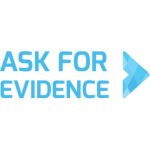
Common pitfalls with studies and things to look out for
‘Ask for Evidence’ introduction to the need for critical appraisal of research studies.
| 0 Comments
Animal Studies
‘Ask for Evidence’ information about the relevance and limitations of animal studies for promoting human health.
| 0 Comments
‘In vitro’ (e.g. test tube) studies
‘Ask for Evidence’ explanation of the term ‘in vitro’ research.
| 0 Comments
Apply the results to your patients
A Duke Univ. tutorial explaining how to address the question: how relevant is the research evidence to the needs of my patient?
| 0 Comments
Delfini: Critical appraisal matters
A 20-minute slide cast discussing how reliable evidence and critical appraisal can help to improve health outcomes.
| 0 Comments
Sunn Skepsis
Denne portalen er ment å gi deg som pasient råd om kvalitetskriterier for helseinformasjon og tilgang til forskningsbasert informasjon.
| 0 Comments
Julia Belluz – Lessons from the trenches of evidence-based health journalism at Vox.com
20-minute talk by Julia Belluz on the need to bring the cultures of health journalism and EBM together.
| 0 Comments
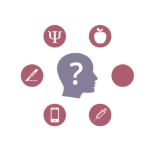
English National Curriculum vs Key Concepts – Key Stage 3
A linked spreadsheet showing how the Key Concepts map to the Science National Curriculum in England at Key Stage 3 (ages 11-14).
| 0 Comments
The surrogate battle – is lower always better?
James McCormick recruits a furious Fuhrer to point out that taking drugs to lower surrogate measures of ill health is a confidence trick.
| 0 Comments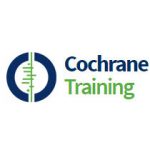
Teach Yourself Cochrane
Tells the story behind Cochrane and the challenges finding good quality evidence to produce reliable systematic reviews.
| 3 Comments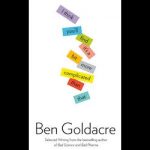
Building evidence into education
Ben Goldacre explains why appropriate infrastructure is need to do clinical trials of sufficient rigour and size to yield reliable results.
| 0 Comments
Anecdotes are great – if they convey data accurately
Ben Goldacre gives examples of how conclusions based on anecdotes and biased research can be damagingly misleading.
| 0 Comments
Unsubstantiated and overstated claims of efficacy
A 32-slide presentation on misleading advertisements and FDA warnings prepared by PharmedOut.
| 0 Comments
Introduction to Evidence-Based Medicine
Bill Caley’s 26 slides with notes used as an ‘Introduction to Evidence-Based Medicine’.
| 0 Comments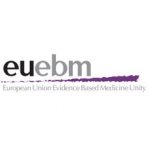
Applying evidence to patients
A 27-minute talk on ‘Applying Evidence to Patients’, illustrated by 17 slides, with notes.
| 0 Comments
Defining clinical questions
An 8-min talk on ‘Defining Clinical Questions’ illustrated by 10 slides, with notes.
| 0 Comments
Applying the evidence
Six key slides produced by the University of Western Australia on applying evidence in practice.
| 0 Comments
Appraising the evidence
Six key slides produced by the University of Western Australia to introduce critical appraisal.
| 0 Comments
Not all scientific studies are created equally
David Schwartz dissects two types of studies that scientists use, illuminating why you should always approach claims with a critical eye.
| 1 Comment
Applying the results of trials and systematic reviews to individual patients
Paul Glasziou uses 28 slides to address ‘Applying the results of trials and systematic reviews to individual patients’.
| 0 Comments
Making the most of the evidence in education
A pamphlet to guide people using research evidence when deliberating about educational policies.
| 0 Comments
Tipsheet for reporting on drugs, devices and medical technologies
Questions that will be familiar to reporters covering health and medicine.
| 0 Comments
Tips for understanding Non-inferiority Trials
A non-inferiority experiment endeavours to show that a new intervention is ‘not unacceptably worse’ than the comparison intervention.
| 0 Comments
GenerationR – The importance of involving children and young people in research
3/3, 22-min video at the launch of GenerationR, a network of young people who advise researchers.
| 0 Comments
Generation R – The need to reduce waste in clinical research involving children
1/3, 14-min video at the launch of GenerationR, a network of young people who advise researchers.
| 0 Comments
Preclinical animal studies: bad experiments cost lives
This blog notes that few therapies that treat disease in animals successfully translate into effective treatments for humans.
| 0 Comments
Surrogate Endpoints in EBM: What are the benefits and dangers?
What are surrogate outcomes, their pros and cons, and why you should be cautious in extrapolating from them to clinical decisions.
| 0 Comments
Balancing Benefits and harms
A blog explaining what is meant by ‘benefits’ and ‘harms’ in the context of healthcare interventions, and the importance of balancing them.
| 0 Comments
Surrogate endpoints: pitfalls of easier questions
A blog explaining what surrogate endpoints are and why they should be interpreted cautiously.
| 0 Comments
Making sense of randomized trials
A description of how clinical trials are constructed and analysed to ensure they provide fair comparisons of treatments.
| 0 Comments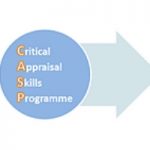
Making sense of results – CASP
This module introduces the key concepts required to make sense of statistical information presented in research papers.
| 0 Comments
Toma de Decisiones Compartidas
¿Por qué nosotros, los pacientes, debemos participar en la toma de decisiones médicas importantes?
| 0 Comments
Using the results of up-to-date systematic reviews of research
Trustworthy evidence from research is necessary, but not sufficient, to improve the quality of health care.
| 0 Comments
Surrogate markers may not tell the whole story
A webpage explaining the limitations of using surrogate outcome markers in clinical research.
| 0 Comments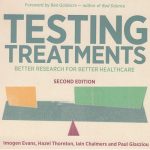
Testing Treatments
Testing Treatments is a book to help the public understand why fair tests of treatments are needed, what they are, and how to use them.
| 0 Comments
Effectiveness Delusions
Cherry picking the results of people in sub-groups can be misleading.
| 0 Comments
Cecil and those pellets again…
If possible, participants in clinical trials should not know which treatment they are receiving.
| 0 Comments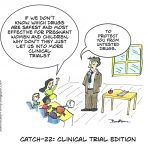
Catch 22 – clinical trials edition
Fair comparisons of treatments in animals or highly selected groups of people may not be relevant.
| 0 Comments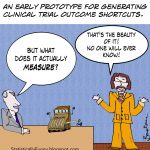
Composite Outcomes
Fair comparisons of treatments should measure important outcomes and avoid dependence on surrogate outcome measures.
| 0 Comments
Biomarkers unlimited
Fair comparisons of treatments should measure important outcomes and avoid dependence on surrogate outcome measures.
| 0 Comments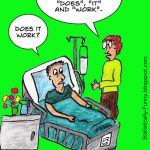
Does it work?
People with vested interests may use misleading statistics to support claims about the efects of new treatments.
| 0 Comments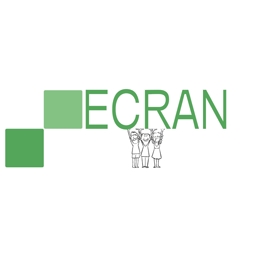
Introduction to clinical trials: lay-friendly video
This lay-friendly video introduction to clinical trials was created by the European Communication on Research Awareness Needs Project.
| 3 Comments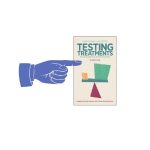
Testing Treatments Audio Book
The Testing Treatments Audiobook enables visitors to the TTi site to select whichever chapters in the book they would like to listen to.
| 0 Comments
Methodology of clinical trials
Eurordis training on the methodology of clinical trials for representatives of patients’ organisations.
| 0 Comments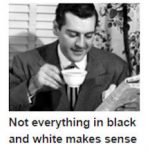
How to read articles about healthcare
This article 'How to read health news behind the headlines', by Dr Alicia White, explains how to assess health claims in the media.
| 0 Comments
Can measurements show if a treatment works?
An article discussing errors to avoid when testing treatments.
| 0 Comments
Animal and Lab studies
A webpage explaining how results from animal studies may not be transferable to humans.
| 0 Comments
Be careful with composites
Kevin Lomangino's article discusses the limitations of composite outcomes and surrogate markers.
| 0 Comments
Disease outcomes vs. patient-relevant outcomes
An e-Learning module consisting of 3 slides and 2-min commentary on why it is important to treat patients, not numbers from tests.
| 0 Comments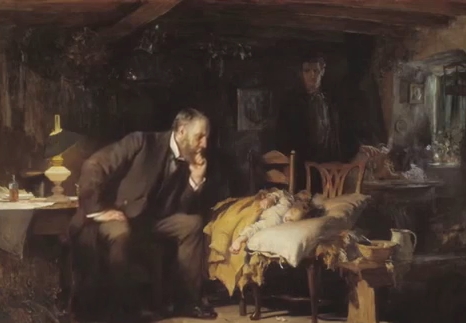
Viva la Evidence!
A brilliant song and video by James McCormack explaining the basics of evidence-based medicine.
| 0 Comments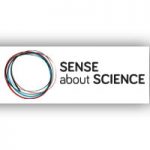
Evidence Based Medicine Matters: Examples of where EBM has benefitted patients
Booklet containing 15 examples submitted by Royal Colleges where Evidence-Based Medicine has benefited clinical practice.
| 0 Comments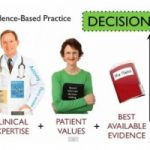
Some Studies That I Like to Quote
This short music video encourages health professionals to use evidence to help reach treatment decisions in partnership with patients.
| 0 Comments
Shared Decision-Making
This resource from the Health Foundation shows how shared decision-making can be made to work in a typical consultation.
| 0 Comments
On taking a good look at ourselves
Iain Chalmers talks about failings in scientific research that lead to avoidable harm to patients and waste of resources.
| 1 Comment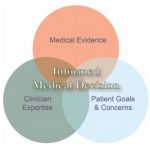
Communicating with patients on evidence
This discussion paper from the US Institute of Medicine provides guidance on communicating evidence to patients.
| 0 Comments
การให้ประชาชนมีส่วนร่วมในการพัฒนาการดูแลสุขภาพ
“การที่กลุ่มพิทักษ์สิทธิ์ผู้ป่วย ผู้ขายวิธีการรักษา และผู้สั่งใช้วิธีนั้นมีผลประโยชน์ร่วมกัน ทำให้เกิดกลุ่มอิทธิพล ซึ่งผลักดันผู้กำหนดนโยบายให้ตัดสินใจเหมือนเดิมแทบทุกครั้ง คือให้เพิ่มการตรวจร่างกาย การทำหัตถการ เตียงในโรงพยาบาล และการให้ยามากขึ้น… ในฐานะนักข่าวที่คลุกคลีในสาขานี้มากว่า 10 ปี ผมรู้สึกว่าการอภิปรายส่วนใหญ่ยังขาดผู้แทนที่คำนึงถึงผลประโยชน์ส่วนรวมอย่างแท้จริง กลุ่มพิทักษ์สิทธิ์ผู้ป่วยได้รับเงินสนับสนุน จึงพร้อมจะเชิดชูวิธีการรักษา หรือเทคโนโลยีใหม่ๆ โดยไม่ค่อยสนใจจะวิพากษ์ในที่สาธารณะเรื่องประสิทธิผลอันน้อยนิด ต้นทุนสูงลิ่วและอันตรายร้ายแรง นักการเมืองก็คล้ายกับนักข่าวจำนวนมากตรงที่เกรงแพทย์ผู้ทรงคุณวุฒิจนเกินพอดี รวมถึงเกรงนักพิทักษ์สิทธิ์ผู้ป่วยหัวแข็ง […]
| 0 Comments
ประชาชนทั่วไปช่วยคิดทบทวนเรื่องโรคเอดส์
“ปัญหาเรื่องการเสื่อมศรัทธาในผู้เชี่ยวชาญ[1] ในเวทีเรื่องโรคเอดส์นั้น โยงใยกับหลายฝ่ายและมีผู้เกี่ยวข้องจำนวนมหาศาล การที่ประชาชนเข้าร่วมอภิปรายและประเมินคำกล่าวอ้างทางวิทยาศาสตร์ ช่วยสร้างองค์ความรู้เรื่องโรคเอดส์ในปัจจุบัน จนยากจะตัดสินว่าใครคือ ‘ประชาชนทั่วไป’ ใครคือ ‘ผู้เชี่ยวชาญ’ กันแน่ ต้องเดิมพันกันทุกอึดใจว่าข้อมูลที่กล่าวอ้าง หรือบุคคลนั้นๆ เชื่อถือได้หรือไม่ แต่อันที่จริง มันเป็นการเดิมพันเรื่องกลไกในการประเมินความน่าเชื่อถือของคำกล่าวอ้างทางวิทยาศาสตร์ว่า ควรตัดสินอย่างไร และใครมีสิทธิ์ตัดสิน (ดังที่การศึกษานี้แสดง) การอภิปรายด้านวิทยาศาสตร์ก็คือการอภิปรายเกี่ยวกับวิทยาศาสตร์ไปพร้อมกัน ว่าควรทำอย่างไร […]
| 0 Comments
ความร่วมมือที่สำคัญ
“งานวิจัยที่มีผู้ป่วยเป็นศูนย์กลางในระบบบริการสุขภาพแห่งชาติต้องได้รับความร่วมมือจากผู้ป่วยและประชาชนจึงจะสำเร็จ “ต่อให้งานวิจัยซับซ้อน หรือนักวิจัยเก่งกาจเพียงใด ความรู้จากประสบการณ์ของผู้ป่วยและประชาชนก็ยังเปิดมุมมองใหม่และเป็นประโยชน์อย่างยิ่ง คำแนะนำจากผู้ป่วยและประชาชนในช่วงที่ออกแบบดำเนินการ และประเมินผลของงานวิจัย ช่วยให้การศึกษามีประสิทธิผลยิ่งขึ้น เชื่อถือได้ยิ่งขึ้น และมักคุ้มค่ายิ่งขึ้นด้วย” Professor Dame Sally Davies. Foreword to Staley K. Exploring impact: public […]
| 0 Comments
ทางเลือกของผู้ป่วย : ดาวิดผู้ฆ่ายักษ์โกไลแอท
“ใครเป็นผู้ที่มองขาดว่าโจทย์วิจัยนั้นๆ สอดคล้องกับความจำเป็นของผู้ป่วยที่เป็นทุกข์และแตกต่างกัน เหตุใดโจทย์วิจัยจึงไม่ตรงประเด็น ขณะนี้ผู้ตั้งโจทย์คือใครและควรเป็นใคร ใครจะเป็นผู้ควบคุมการจัดลำดับความสำคัญ ผู้ป่วยรู้ดีที่สุดว่าประเด็นด้านสุขภาพประเด็นใดตรงใจตน และเป็นประโยชน์ที่สุดต่อความสบายกายใจ การดูแล และคุณภาพชีวิต รวมถึงอายุขัยของตน ผู้ป่วยคือ ดาวิดมนุษย์ผู้ต้องเตรียมอาวุธเพื่อโค่นยักษ์ใหญ่โกไลแอท ซึ่งก็คือ บริษัทยาที่ต้องการหลักฐานเพื่อขายสินค้าหากำไร และนักวิจัย ซึ่งมีความอยากรู้อยากเห็น ความจำเป็นที่ต้องหาเงินทุนวิจัย ชื่อเสียง และความก้าวหน้าในหน้าที่การงาน เป็นแรงผลักดัน […]
| 0 Comments
ผู้ป่วยโรคสะเก็ดเงินแทบไม่ได้รับประโยชน์จากงานวิจัย
“มีการทดลองไม่กี่เรื่องที่เปรียบเทียบทางเลือกต่างๆ หรือการดูแลผู้ป่วยในระยะยาว การศึกษาต่างๆ ทำในระยะสั้นจนไม่น่าเชื่อถือ เมื่อคำนึงถึงว่าโรคนั้นมีแนวโน้มจะเรื้อรังแทบตลอดชีวิต ดูเหมือนสิ่งที่รู้ชัดมีเพียงว่าวิธีการรักษาที่ใช้นั้นดีกว่าไม่ทำอะไรเลย ที่สำคัญนักวิจัยละเลยประสบการณ์ มุมมอง ความต้องการ และ ความพึงพอใจของผู้ป่วย” อาร์ จ็อบลิง ประธานสมาคมโรคสะเก็ดเงิน (Psoriasis Association) Jobling R. Therapeutic research […]
| 0 Comments
ใครเป็นผู้ตัดสินใจว่าจะศึกษาอะไร
เห็นชัดว่าสถานการณ์ดังกล่าวไม่เข้าที แต่เหตุใดจึงเป็นเช่นนี้ เหตุผลหนึ่งคือประเด็นวิจัยมักถูกบิดเบือนโดยปัจจัยภายนอก [22] เช่น อุตสาหกรรมยาทำการวิจัยเพื่อสนองเป้าหมายหลัก คือเพื่อให้ลุล่วงตามภาระหน้าที่ในการทำกำไรที่มีต่อผู้ถือหุ้น ส่วนความรับผิดชอบที่มีต่อผู้ป่วยและแพทย์สำคัญรองลงมา ธุรกิจถูกชักจูงด้วยตลาดขนาดใหญ่ เช่น หญิงที่สงสัยว่าควรใช้วิธีการรักษาด้วยฮอร์โมนทดแทนหรือไม่ หรือผู้ป่วยที่ซึมเศร้า วิตก กังวล หดหู่ หรือเจ็บปวด ทว่าในช่วงทศวรรษหลังๆ แนวทางแบบเล็งผลทางการค้านี้แทบไม่ได้ทำให้เกิดวิธีการรักษาใหม่ที่สำคัญ แม้แต่ในโรค “ยอดนิยม” […]
| 2 Comments
โจทย์ที่สำคัญต่อผู้ป่วย
นักวิจัยในบริสตอล สหราชอาณาจักร ตัดสินใจตั้งคำถามสำคัญว่า “งานวิจัยเรื่องโรคข้อเข่าเสื่อมตอบโจทย์ที่สำคัญต่อผู้ป่วยและแพทย์หรือไม่อย่างไร” [17] พวกเขาเริ่มจากจัดกลุ่มสนทนา 4 กลุ่ม ได้แก่ กลุ่มผู้ป่วยอายุรแพทย์โรคข้อนักกายภาพบำบัด และแพทย์เวชปฏิบัติทั่วไป กลุ่มคนเหล่านี้เห็นตรงกันว่าไม่อยากให้ทำการทดลองที่สนับสนุนโดยบริษัทยา ซึ่งเปรียบเทียบยาต้านการอักเสบที่ไม่ใช่สเตียรอยด์ (กลุ่มยาที่มีไอบูโพรเฟน เป็นต้น) กับยาหลอกอีก ผู้ป่วยเห็นว่าแทนที่จะศึกษาเรื่องยา น่าจะมีการประเมินการทำกายภาพบำบัดและการผ่าตัดอย่างมีคุณภาพ รวมถึงประเมินมาตรการให้ความรู้และรับมือกับโรค ซึ่งอาจช่วยให้ผู้ป่วยจัดการกับอาการเรื้องรังที่มักก่อความเจ็บปวดและอาจพิการนี้ได้เป็นผลดียิ่งขึ้น […]
| 0 Comments
โรคหลอดเลือดสมอง
อีกตัวอย่างของงานวิจัยที่ไม่จำเป็น ซึ่งเกิดเพราะไม่มีการรวบรวมและวิเคราะห์ผลจากการศึกษาก่อนๆ เช่นกัน เป็นเรื่องการรักษาโรคหลอดเลือดสมองด้วยยาชื่อนิโมดิปีน (nimodipine ยาในกลุ่มยับยั้งตัว รับแคลเซียม [calcium antagonist]) หากจำกัดบริเวณที่สมองเสียหายได้ในผู้ป่วยที่มีอาการโรคหลอดเลือดสมอง โอกาสเกิดความพิการก็น่าจะลดลง หลังจากการทดลองใช้นิโมดิปีนในสัตว์ให้ผลที่ดูเข้าที ก็เริ่มมีการทดลองยาดังกล่าวเพื่อการนี้ในผู้ป่วยโรคหลอดเลือดสมองในทศวรรษ 1980 การทดลองซึ่งตีพิมพ์ในปี ค.ศ. 1988 พบผลที่เป็นประโยชน์ต่อผู้ป่วยในกลุ่มนี้ แต่ผลจากการทดลองอีกจำนวนมากเรื่องนิโมดิปีนและยาชนิดอื่นในกลุ่มเดียวกันกลับขัดแย้งกัน เมื่อมีการทบทวนหลักฐานจากการทดลองในคนทั้งหมดอย่างเป็นระบบในผู้ป่วยรวมเกือบ […]
| 2 Comments
การให้ยาแก้ปวดทางไขสันหลัง (Epidural analgesia) ในหญิงใกล้คลอด
การทดลองเรื่องแรกๆ เกี่ยวกับการให้ยาแก้ปวดทางไขสันหลังเพื่อบรรเทาความเจ็บปวดระหว่างคลอด เป็นตัวอย่างที่ไม่ควรเอาอย่าง แต่แสดงให้เห็นความสำคัญของการประเมินผลการรักษาที่สำคัญต่อผู้ป่วย ในทศวรรษ 1990 นักวิจัยทบทวนการทดลองแบบมีกลุ่มควบคุมที่เปรียบเทียบการให้ยาแก้ปวดทางไขสันหลังกับการให้ยาด้วยวิธีอื่น โดยคะเนว่ามีหญิงที่เข้าร่วมในการเปรียบเทียบที่ไม่ลำเอียงระหว่างวิธีนี้กับวิธีอื่นไม่ถึง 600 ราย ทั้งที่ในช่วง 20 ปีก่อนหน้านั้นมีหญิงหลายล้านรายได้รับยาแก้ปวดทางไขสันหลัง นักวิจัยพบการเปรียบเทียบ 9 เรื่อง ซึ่งนำมาวิเคราะห์ได้อย่างมั่นใจ พบว่าการเปรียบเทียบส่วนใหญ่วัดผลด้วยระดับฮอร์โมนและสารอื่นๆ ซึ่งเชื่อว่าบ่งชี้ถึงความเครียดขณะคลอด มีบ้างที่สนใจผลต่อทารก […]
| 0 Comments
ระบบกำกับงานวิจัยควรทำอะไร
“ถ้านักจริยธรรมและคนอื่นๆ อยากหาประเด็นวิจารณ์การทดลองในคน ก็ควรวิจารณ์งานที่ผิดหลักวิทยาศาสตร์ พร่ำเพรื่อ และที่สำคัญที่สุดคือ การคัดคนออกโดยไม่สมควร รวมถึงการใช้ทรัพยากรโดยไร้เหตุผล ข้อวิจารณ์ในปัจจุบันมีช่องโหว่ เนื่องจากไม่คำนึงว่าการทดลองเป็นไปเพื่อให้มั่นใจว่าวิธีการรักษาที่ใช้ปลอดภัยและได้ผลดีกว่าทางอื่น จริยธรรมไม่มีทางลัดเช่นเดียวกับการทดลอง” Ashcroft R. Giving medicine a fair trial. BMJ 2000;320:1686.
| 0 Comments
การใช้สามัญสำนึกในการขอความยินยอมหลังให้ข้อมูลในแนวทางเวชปฏิบัติที่ดี
“การขอความยินยอมยังไม่เคยถูกอภิปรายในด้านความเข้าใจของผู้ป่วยที่แท้จริง ข้อมูลที่ผู้ป่วยอยากรู้คืออะไร และวิธีรับมือเมื่อผู้ป่วยอยากรู้แต่น้อย ไม่ค่อยมีการศึกษาด้านการประเมินความเข้าใจของผู้ป่วยต่อข้อมูลที่ได้รับ แพทย์มักไม่แน่ใจว่าผู้ป่วยและญาติเข้าใจข้อมูลนั้นๆ ถูกต้องเพียงใด ทั้งนี้ความเข้าใจขึ้นอยู่กับผู้ให้ข้อมูล วิธีอธิบาย และเวลา หรือสภาพแวดล้อมที่จำเป็นต่อการพิจารณาข้อมูล การที่แพทย์ตัดสินใจแทนผู้ป่วยเป็นสิ่งที่ยอมรับไม่ได้ในเวชปฏิบัติ เวชปฏิบัติที่ดีต้องใช้วิธีตามสามัญสำนึก โดยอธิบายสิ่งต่างๆ ให้กระจ่าง ปรับสิ่งที่อธิบายให้เหมาะกับความต้องการของผู้ป่วย และตรวจสอบว่าผู้ป่วยเข้าใจหรือไม่” Gill R. How to […]
| 0 Comments
ย้อนคิดเรื่องการขอความยินยอมหลังให้ข้อมูล
“(มีผู้ที่) เริ่มแคลงใจว่าการขอความยินยอมหลังให้ข้อมูลอาจ ไม่จำเป็นต่อการปฏิบัติงานด้านชีวการแพทย์ที่ดี และ…การฝืนให้มันเป็นสิ่งจำเป็นก็เสียแรงเปล่า ผู้เขียนหวังว่าข้อกำหนดเป็นกองพะเนินเรื่องการขอความยินยอมหลังให้ข้อมูลที่เกิดขึ้นตลอดช่วง 50 ปีที่ผ่านมาจะถูกปฏิรูปและลดลง โดยใช้เวลาน้อยกว่าตอนสร้าง” Manson NC, O’Neill O. Rethinking informed consent in bioethics. Cambridge: Cambridge University […]
| 0 Comments
ระบบกำกับงานวิจัยยังขาดอะไรบ้าง
แม้ระบบกำกับงานวิจัยจะบังคับให้นักวิจัยทำตามข้อกำหนดเข้มงวดก่อนเริ่มการศึกษา แต่เห็นชัดว่าระบบนี้ยังขาดและบกพร่องหลายด้าน หลายระบบไม่ตรวจสอบจนมั่นใจได้ว่าการศึกษาที่วางแผนจะทำนั้นจำเป็น เช่น อาจไม่กำหนดให้นักวิจัยแสดงว่าได้ทบทวนหลักฐานทั้งหมดที่มีอย่างถี่ถ้วนแล้ว ก่อนจะเริ่มทำการศึกษาใหม่ (ดูบทที่ 8 ว่าเหตุใดการทบทวนวรรณกรรมอย่างเป็นระบบจึงสำคัญยิ่ง) นอกจากนี้ มาตรการกำกับงานวิจัยส่วนใหญ่ใช้ในช่วงเริ่มต้นวิจัยโดยเน้นการสอดส่องการเชิญชวนผู้เข้าร่วมการศึกษา แต่น่าแปลกใจที่ไม่ค่อยมีมาตรการติดตามระหว่างดำเนินการศึกษา และรับประกันว่านักวิจัยจะตีพิมพ์รายงานทันทีเมื่อการศึกษาสิ้นสุด (หรือกระทั่งตีพิมพ์หรือไม่) เพื่ออธิบายว่าผลการศึกษานั้นช่วยลดความไม่แน่นอนลงอย่างไร ผู้ที่ถูกเชิญชวนให้เข้าร่วมงานวิจัยเรื่องผลของวิธีการรักษาต้องวางใจได้ว่างานนั้นเป็นที่ต้องการ และความช่วยเหลือของตนจะเป็นประโยชน์ระบบกำกับงานวิจัยที่ดี ซึ่งมุ่งไขประเด็นที่ผู้ป่วยเห็นว่าสำคัญ ปัจจุบันมีผู้ตระหนักเพิ่มขึ้นว่าการตรวจสอบวิธีการรักษาเกี่ยวข้องกับทุกคน หากผู้ป่วยและประชาชนคว้าโอกาสที่มีผู้หยิบยื่นให้ในทุกวันนี้ […]
| 2 Comments
ข้อมูลและการให้ความยินยอม
ข้อกำหนดด้านการให้ข้อมูลและความยินยอมเข้าร่วมการศึกษาเป็นมาตรการหนึ่งที่ขัดขวางมากกว่าจะสนับสนุนงานวิจัยที่ทำเพื่อลดความไม่แน่นอนเรื่องวิธีการรักษา สิ่งสำคัญคือ ต้องใส่ใจประโยชน์ของทุกคนที่รับการรักษาอยู่ในขณะนั้น ไม่ใช่แค่คนไม่กี่คนที่เข้าร่วมการทดลอง จึงจะถูก จริยธรรม [2] ดังนั้น มาตรฐานในการขอความยินยอมหลังให้ข้อมูล (informed consent) เรื่องการรักษาจึงควรเหมือนกัน ไม่ว่าผู้ป่วยรายนั้นรับการรักษาโดยเข้าร่วมการประเมินอย่างเป็นกิจจะลักษณะหรือไม่ ผู้ป่วยควรได้รับข้อมูลมากจนพอใจในเวลาที่ต้องใช้ เพื่อให้ตัดสินใจได้ตรงกับสิ่งที่ตนเห็นว่าสำคัญและต้องการ เมื่อให้ หรือสั่งใช้วิธีการรักษาในเวชปฏิบัติในชีวิตประจำวัน เป็นที่รู้กันว่าผู้ป่วยแต่ละรายมีความต้องการกับความจำเป็นที่แตกต่างกันและอาจเปลี่ยนไปตามกาลเวลา อีกทั้งผู้ป่วยยังอาจต่างกันในด้านปริมาณและประเภทของข้อมูลที่ต้องการ ความสามารถใคร่ครวญข้อมูลทั้งหมดในเวลา […]
| 0 Comments
“มีนัยสำคัญทางสถิติ” หมายความว่าอย่างไร
“อันที่จริงการมีนัยสำคัญทางสถิติเป็นแนวคิดที่ยุ่งยาก มันบอกเราได้ว่าความแตกต่างเกิดจากความบังเอิญหรือไม่ เช่น ระหว่างยาจริงกับยาหลอก หรือระหว่างอายุคาดเฉลยของคน 2 กลุ่ม…โดยแปล ว่าความแตกต่างเท่าที่สังเกตพบไม่น่าจะเกิดเพียงเพราะบังเอิญ นักสถิติใช้ระดับมาตรฐานของการที่ ‘ไม่น่าจะบังเอิญ’ โดยทั่วไปใช้นัยสำคัญที่ร้อยละ 5 (อาจเขียนได้ว่า p = 0.05) ในกรณีนี้จะถือว่าความแตกต่างนั้นๆ ‘มีนัยสำคัญ’ เมื่อมีโอกาสน้อยกว่า 1 […]
| 0 Comments
วิธีการรักษา “แตกต่างอย่างมีนัยสำคัญ” แปลว่าอะไร
คำถามนี้ตอบยาก เพราะ “ความแตกต่างที่มีนัยสำคัญ” อาจแปลได้หลายอย่าง อย่างแรก คือ ความแตกต่างที่สำคัญต่อผู้ป่วยจริง ทว่าเมื่อผู้เขียนรายงานวิจัยกล่าวว่าวิธีการรักษา “แตกต่างอย่างมีนัยสำคัญ” พวกเขามักหมายถึง “ความแตกต่างทางสถิติ” ทั้งนี้ “ความแตกต่างที่มีนัยสำคัญทางสถิติ” อาจไม่ได้ “มีนัยสำคัญ” ในความหมายที่ใช้กันทั่วไป “ความแตกต่าง” ระหว่างวิธีการรักษา “ที่มีนัยสำคัญทางสถิติ” ซึ่งก็คือ […]
| 2 Comments
การสะสางความไม่แน่นอนด้านผลการรักษา
แล้วเราควรทำอย่างไรต่อไป แพทย์ต้องสามารถใช้ข้อมูลเรองวิธีการรักษา ซึ่งเป็นหลักฐานที่ดีที่สุด ณ เวลานั้นจากการรวบรวมประสบการณ์และการทบทวนงานวิจัยที่เชื่อถือได้ทั้งหมดอย่างเป็นระบบ ถ้ายังพบว่ามีความไม่แน่นอนเรื่องวิธีการรักษา แพทย์ก็ต้องพร้อมจะหารือกับผู้ป่วย อธิบายว่าทำไมจึงเป็นเช่นนี้ และปรึกษากันเรื่องทางเลือกโดยคำนึงถึงสิ่งที่ผู้ป่วยต้องการ แม้การหารืออาจเปิดประเด็นความไม่แน่นอนที่ต้องยอมรับ และสะสางเพิ่มขึ้นอีกก็ตาม เราจะก้าวหน้าอย่างมั่นคงไปสู่การรักษาที่เหมาะสมและปลอดภัยขึ้นได้ ก็ต่อเมื่อเราต่างตระหนักว่ายังมีความไม่แน่นอน ความไม่แน่นอนจึงเป็นสิ่งจำเป็นเพื่อให้เกิดความก้าวหน้า ไม่ใช่เพื่อให้ยอมรับ “ความพ่ายแพ้” ทุกวันนี้แนวทางสำหรับผู้ประกอบวิชาชีพบางฉบับก็แสดงทัศนคติในแง่ดีต่อการสะสางความไม่แน่นอนต่างๆ แนวทางเวชปฏิบัติที่ดี (Good Medical […]
| 0 Comments
เมื่อแพทย์เห็นไม่ตรงกัน
ในหลายๆ โรคและหลายๆ อาการ ยังไม่แน่นอนนักว่าวิธีการรักษาใดได้ผลมากน้อยเพียงใด และวิธีใดดีที่สุดสำหรับผู้ป่วยรายนั้น แต่แพทย์กลับไม่ลดการมองวิธีการรักษาต่างๆ แบบสุดโต่งลงเลย ทั้งที่ความเห็นของแพทย์แต่ละรายอาจแตกต่างกัน ซึ่งทำให้วิธีการรักษาที่ใช้ในอาการนั้นๆ ต่างกันโดยสิ้นเชิง ในทศวรรษที่ 1990 เอียน ชาลเมอร์ส ซึ่งเป็นหนึ่งในผู้เขียน ข้อเท้าหักขณะพักผ่อนอยู่ในสหรัฐอเมริกา เขาได้รับการรักษาโดยศัลยแพทย์กระดูกและข้อ ซึ่งดามขาข้างนั้นไว้ชั่วคราวและบอกว่า หลังจากหายบวมจะมีการใส่เฝือกแข็งตั้งแต่เข่าลงมานาน 6 […]
| 2 Comments
เฮอเซปติน (Herceptin)
ไม่ได้มีแต่บริษัทเชิงพาณิชย์ที่เชิดชูข้อดีและกลบเกลื่อนข้อเสีย ของวิธีการรักษาใหม่ ความตื่นเต้นดีใจของผู้ประกอบวิชาชีพด้านสุขภาพและการประโคมของสื่อก็ส่งผลเช่นเดียวกัน ข้อเสียเหล่านี้อาจไม่ใช่แค่ผลข้างเคียงที่เป็นอันตราย แต่ยังรวมถึงความยุ่งยากในการตรวจวินิจฉัยโรคด้วย ดังจะเห็นได้จากเหตุการณ์เกี่ยวกับยาโรคมะเร็งเต้านม ทราสทูซูแมบ (Trastuzumab) ซึ่งมักรู้จักกันในชื่อการค้าเฮอเซปติน (ดูเพิ่มเติมในบทที่ 3) ต้นปี ค.ศ. 2006 การเรียกร้องของกลุ่มผู้ป่วยและผู้ประกอบวิชาชีพซึ่งหนุนโดยอุตสาหกรรมยาและสื่อมวลชนทำให้ระบบบริการสุขภาพแห่ง ชาติ (National Health Service) ในสหราชอาณาจักรให้ผู้ป่วยมะเร็งเต้านมระยะแรกใช้เฮอเซปตินได้ […]
| 1 CommentNo Resources Found
Try clearing your filters or selecting different ones.
